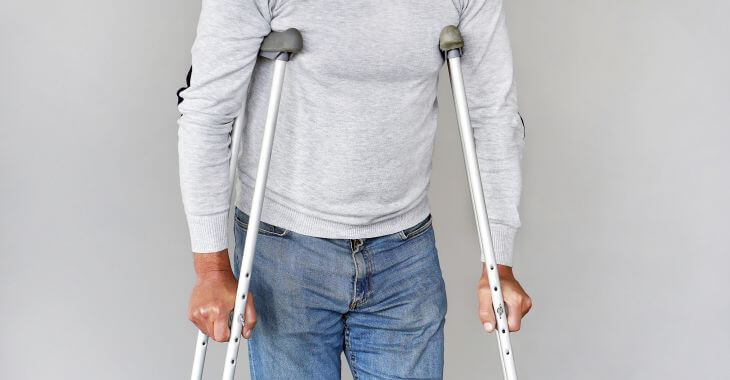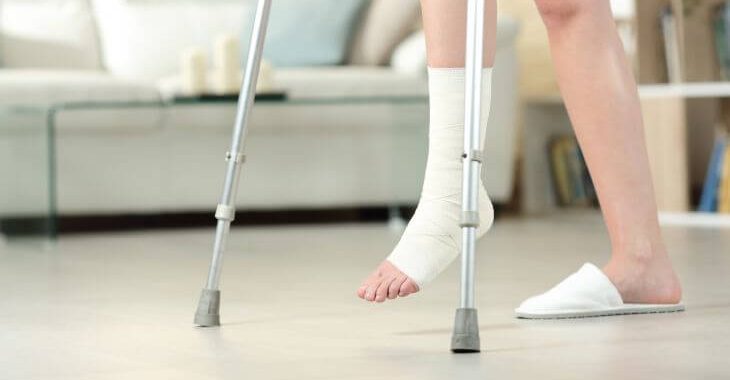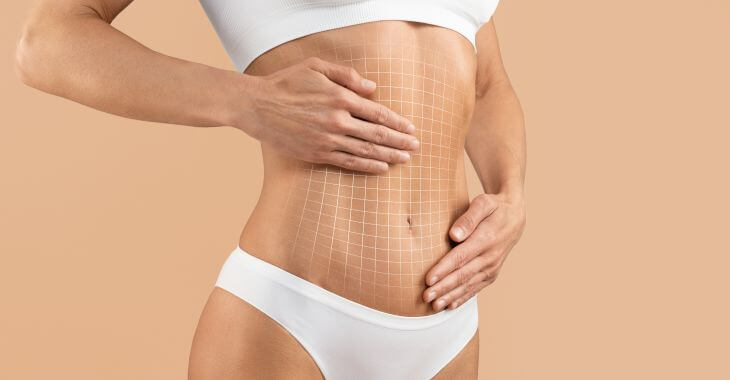Tips on How to Make Crutches More Comfortable

When you have to spend time on crutches due to an injury or surgery, it can be difficult. Not only do crutches limit your mobility, but they can be uncomfortable. Using crutches for supporting your body can result in callouses and sore points under the arms and on the hands. Here are some tips on how to make crutches more comfortable during your recovery time.
Crutches are a valuable tool to help you alleviate pressure on an injured leg, hip, knee or foot while the injury heals, while still allowing you to stay mobile. The problem is that if the crutches are not properly fitted to the patient or outfitted with the right gear, they can cause pain and other problems. Some of the possible problems with uncomfortable crutches include:
- Chaffing in the armpits
- Sore hands
- Callouses on hands or armpits
- Injuries from slipping on crutches
- Nerve damage from pressure under the arms
- Skin irritation
Poorly fitted and equipped crutches can cause injuries and pain. To avoid discomfort and higher risks of injuries, it is important to know how to make crutches more comfortable and safer to use.
Are Your Crutches the Right Size?
The first step in making your crutches more comfortable is ensuring they are the right size and adjusted for your height. Crutches that are too tall can dig into your armpits and those too low can cause you to slump over, causing back, shoulder and neck pain. If you ordered your crutches through your doctor or from a medical supply company, they likely used your height to ensure you have the right-sized crutches. However, if you borrowed your crutches from a friend or family member, you should ensure they are the right size.
If your crutches are the right size, you may still need to adjust them to fit your armpit height and arm length. Each person has different dimensions, even if they are the same height. Make sure the arm rest fits comfortably in your arm pit without needing to bend forward – the crutch pad should be about two inches lower than your armpit when standing erect, allowing room for movement. Your handgrip should be set so that your arm is slightly bent at the elbow for comfortable use.
Do You Need Crutch Pads?
The top of crutches come with padding, but it is rarely adequate to provide comfort. Commercial crutch pads are a great option when you are trying to find how to make crutches more comfortable. These pads fit over the existing crutch padding, providing a softer, more fitted arm rest. Many crutch pads use gel or memory foam to conform to the shape of your armpit, reducing pressure on skin and nerves that can cause pain when using crutches. You can also make DIY crutch pads with a towel or duct taping foam to soften the crutch top.
Improve Your Hand Grips
Like the top of crutches, the hand grips may need extra padding and a stable grip to make your crutches safer and more comfortable. There are commercial hand grips that can provide a better handhold that will not slip when you are navigating on your crutches. Extra foam or gel in the handgrip can also relieve pressure and prevent callouses on your hands.
If you do not have access to commercial hand grips, consider DIY padding using a small towel or adding foam to the grips to make them more comfortable. Always check to ensure the hand grips are secure and do not move when you are using your crutches to avoid accidents.
Add Traction to Your Crutch Feet
The last thing you want to happen when using crutches is a fall. You are already injured; a fall could impact your original injury or cause a new one. It is important that you have crutches with good traction that will not slip out from underneath you. The feet of crutches usually have rubber tips – you can add safer traction crutch feet that are better suited for slippery waxed floors or icy conditions. Also, make sure you dry the crutch feet off after coming in from outside when it is raining, or snow/ice is on the ground to avoid slipping on hard surfaces.

When your doctor or physical therapist recommends crutches for your injury recovery, make sure you get the right equipment to keep you comfortable and safe. Order crutches that are designed for your height and adjust them correctly to fit your body. Adding crutch pads and hand grips are some of the best options for how to make crutches more comfortable, as well as adding safety features like traction tips for crutch feet. By making a few adjustments, you can have a more enjoyable experience while using crutches during your injury recovery.
The information provided on this website, including text, graphics, images, and other materials, is intended solely for informational purposes and should not be used as a substitute for professional medical advice, diagnosis, or treatment.



)